Carpet pythons (Morelia spilota) are typically very good feeders. Most information on the species will mention how rarely they go off their food.
If your carpet python goes on a feeding strike, this can be very concerning. If your snake isn’t eating, here is what to do if your carpet python isn’t eating:
As a general rule, most carpet pythons that stop feeding do so because of stress or poor husbandry. Check your temperatures, humidity, and make sure to reduce stress for your snake as much as possible.
Common Causes
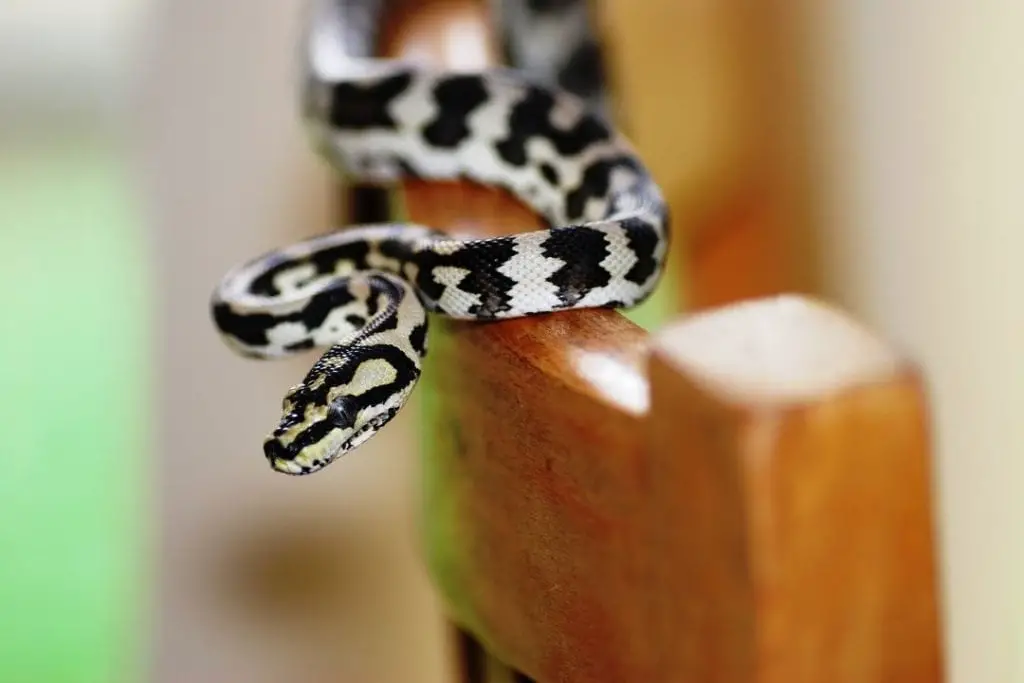
Figuring out why your carpet python has stopped eating is the first step to solving the problem. Stress is a major cause. A snake that has been put through shipping will frequently refuse to eat until it has settled down.
If you have been handling your snake often, it will likely go on a feeding strike. If there is a lot of noise or potential predators in the area where the enclosure is kept, your carpet python can become stressed and refuse to eat.
Poor husbandry is another potential cause. Make sure to read my complete care guide for carpet pythons.
If the temperatures are too low for digestion, your snake will likely refuse to eat. High temperatures can cause the same reaction.
Low humidity, a lack of hides, or other enclosure problems are common causes for a feeding strike.
Illnesses and parasites are other major factors in appetite loss. If a snake suddenly goes off its food when nothing has changed, this is a major sign that your pet needs veterinary attention.
Snakes are very good at hiding illnesses, but appetite loss is one of the easiest signs to notice. Some parasites may cause changes in the stomach where your snake cannot eat.
Other illnesses like mouth rot can make it too painful for your snake to eat.
Prey pickiness is the next most common cause for feeding strikes. A carpet python raised on a diet of mice may not recognize a rat as food.
Even if you haven’t changed the prey animal, your snake may go on a strike if you change how the prey is presented. An animal that is used to live prey may be confused by a frozen meal.
Some snakes may also only recognize a certain color as being the color of prey.
If your snake is used to eating brown or dark-colored rats, it may balk at a white animal. This can be overcome with work. One thing that can’t be overcome is refusal because of poor prey quality.
Snakes have an amazing sense of smell. If something is wrong with the prey you are offering, they can tell and may refuse to eat.
For instance, some cheap suppliers of frozen rodents may freeze animals that were found dead. If the animal was starting to decay before it was frozen, your snake may smell this. This isn’t a bad thing, since a rotting prey item can make your snake very ill.
What to Do About Feeding Strikes
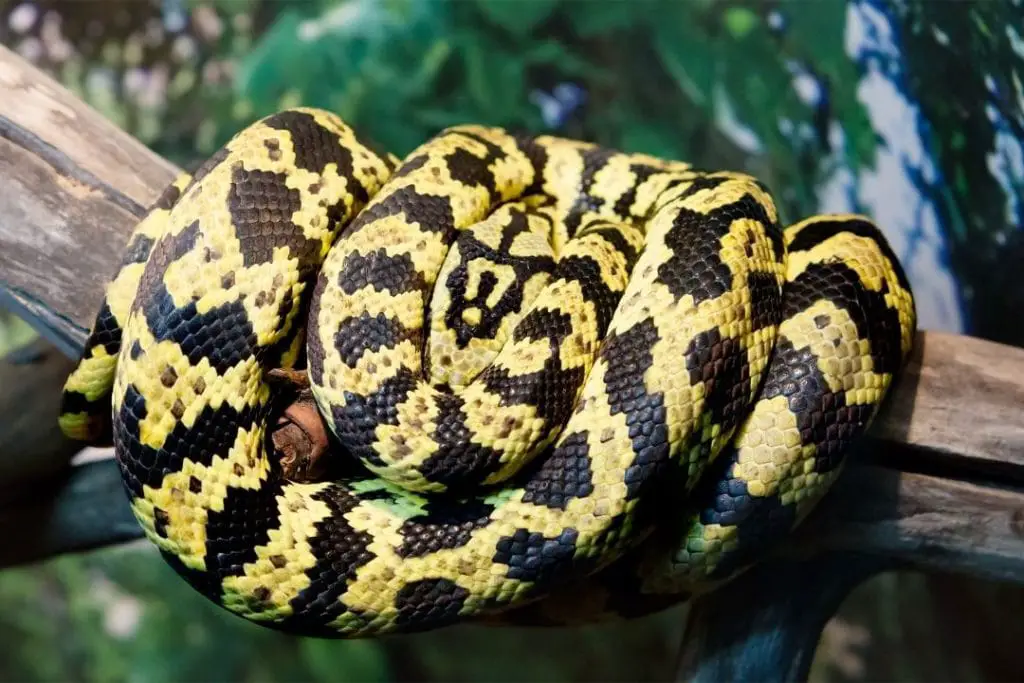
The very first thing to check when a feeding strike happens is the temperature. You should immediately check the temperatures in your snake’s enclosure to make sure your snake isn’t too hot or cold.
Do not just rely on your thermometers. Sometimes, these can be off. Use a reliable temperature gun to check the surface of each side of the enclosure and inside each hide.
Check any perches your snake seems to enjoy like a branch or shelf. You may find that the conditions are a bit off.
Make sure your snake has plenty of water available and check that the humidity is in the right range. Also, check your snake for signs of shedding. Many snakes will not eat when they are shedding.
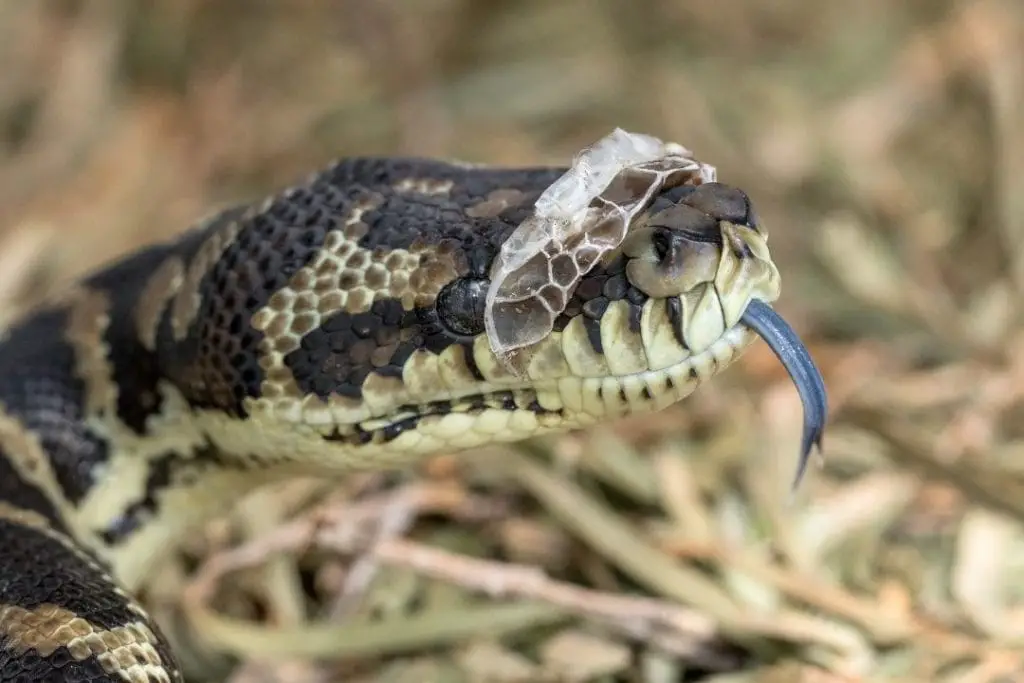
If there is not an immediately obvious problem, check for other signs of illness like changes to the skin’s texture or color, and listen to your snake’s breathing if possible.
If you see any signs of illness like excess mucus or wheezing, take your snake to the reptile vet as soon as possible. If you are seeing your snake breathe with its mouth open and you see mucus that is tinged with pus or blood, immediately take your snake to the vet.
If there are no signs of illness or parasites and other conditions are fine, consider stress as a cause.
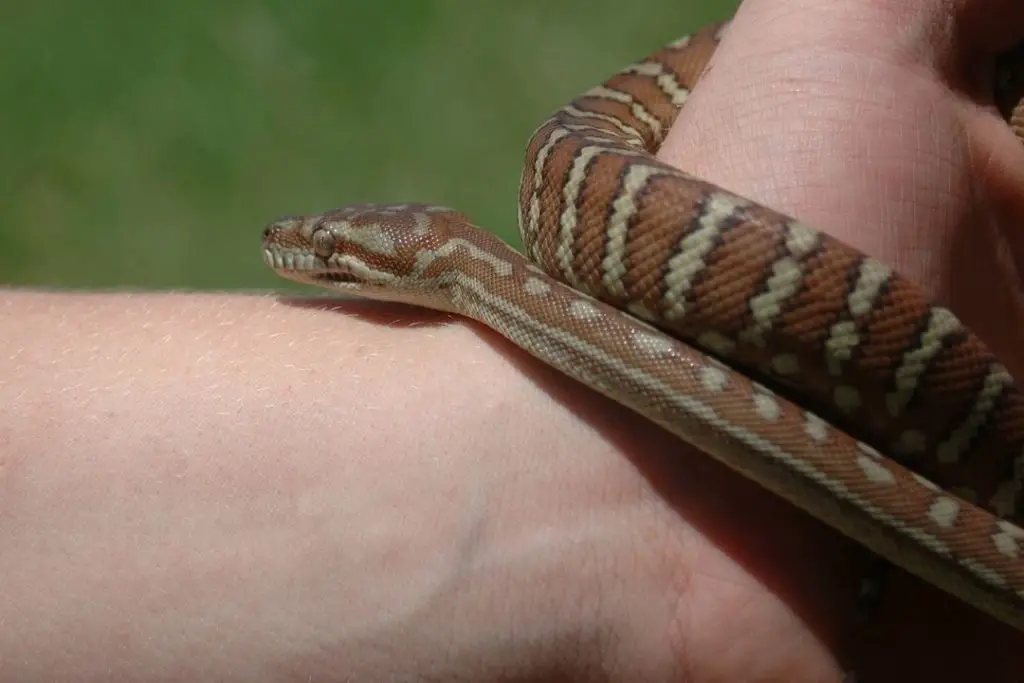
Too much handling or fuss near the enclosure can easily put a snake off its food. A newly arrived snake will also likely refuse to eat for a few days to two weeks.
Try to give your snake some space and allow it to relax. Only go in the enclosure for cleaning. Generally, if you do not see signs of illness and you are not breeding your carpet python, your snake can afford to miss a few meals.
Some animals may just not be hungry. Watch out for signs that your snake is losing weight. Otherwise, watch for signs of hunger like hunting behavior.
Once your snake is hungry, try offering it a meal. This can also help if your snake is being stubborn about switching to a different type of prey.
Many carpet pythons will skip a few meals if they do not want to try eating a rat or a thawed animal. For a snake used to mice, try rubbing a rat with a mouse or with mouse bedding.
This can trick the snake into trying it. With frozen prey, you can use the feeding tongs to move a warmed prey item around to simulate life.
You can also “brain” the prey. This involves using a pin or nail to poke a hole in the skull and squeezing out a bit of the brain.
This can be smeared on the prey to make it smell more appealing to your snake. While it can be gross, this is one of the best tricks for reluctant snakes.
Remember, your snake mainly operates by smell and its sense of heat when it comes to finding food. If color is putting off your snake, try looking for prey with different fur colors and see what your snake will take.
Conclusion
While feeding strikes are concerning, they can be overcome. Be patient and rule out health causes since these are the most likely to kill your snake.
Your vet can also help if your snake has been on a long-term feeding strike.
If you have any questions or experience with carpet pythons refusing to eat, please leave a comment below.
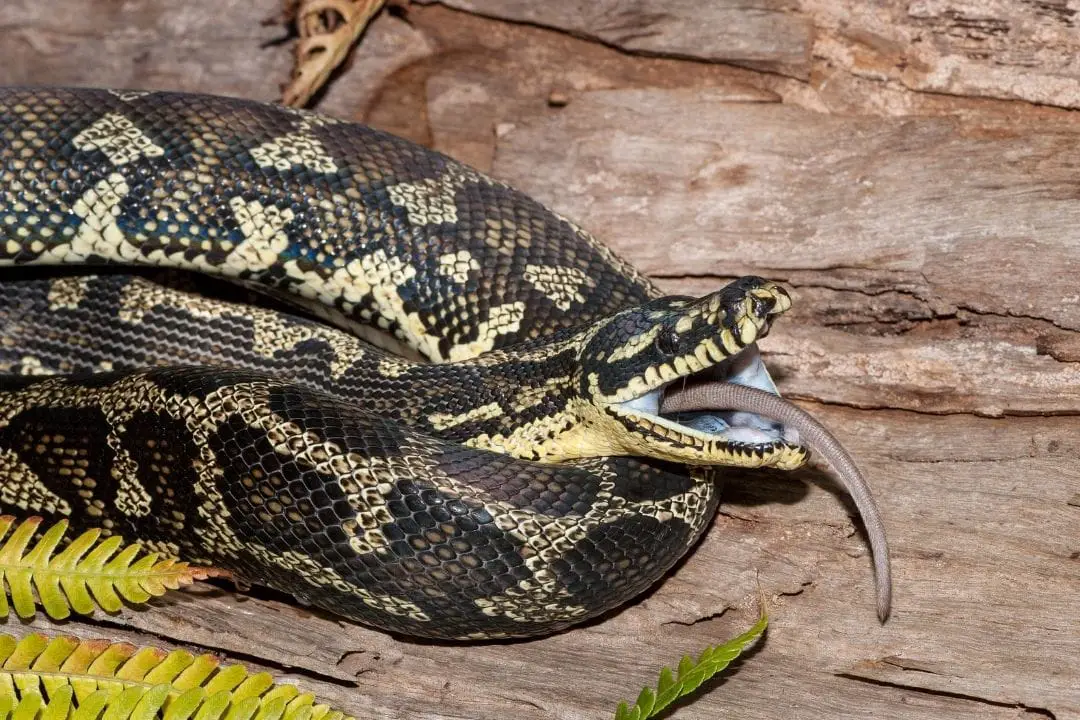
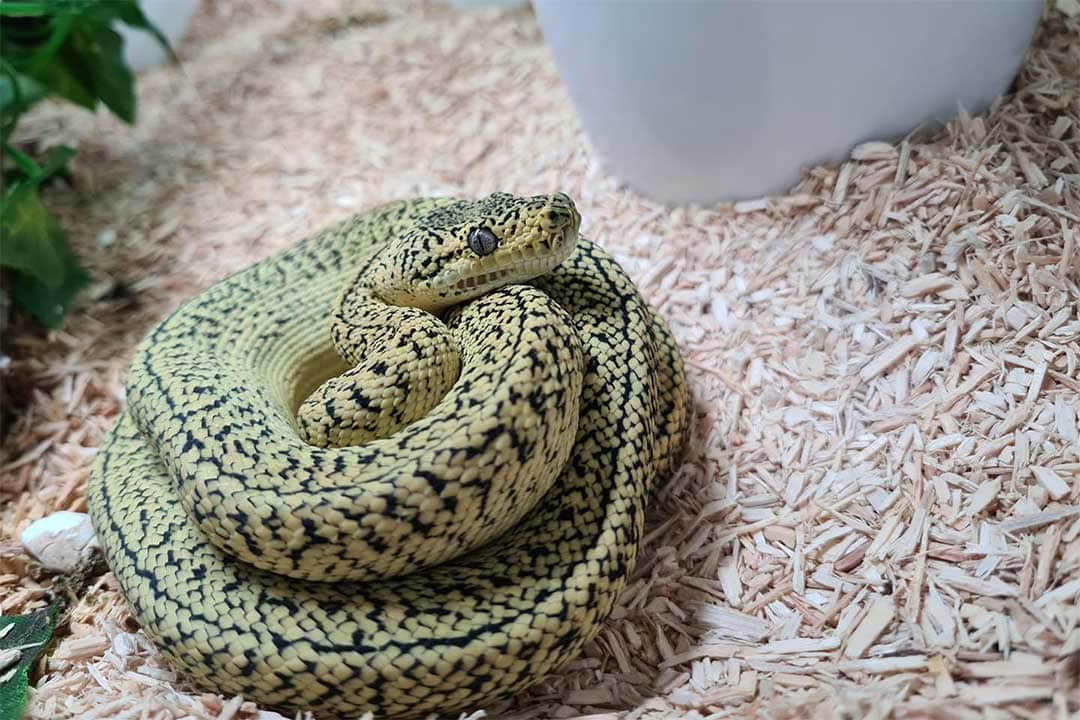
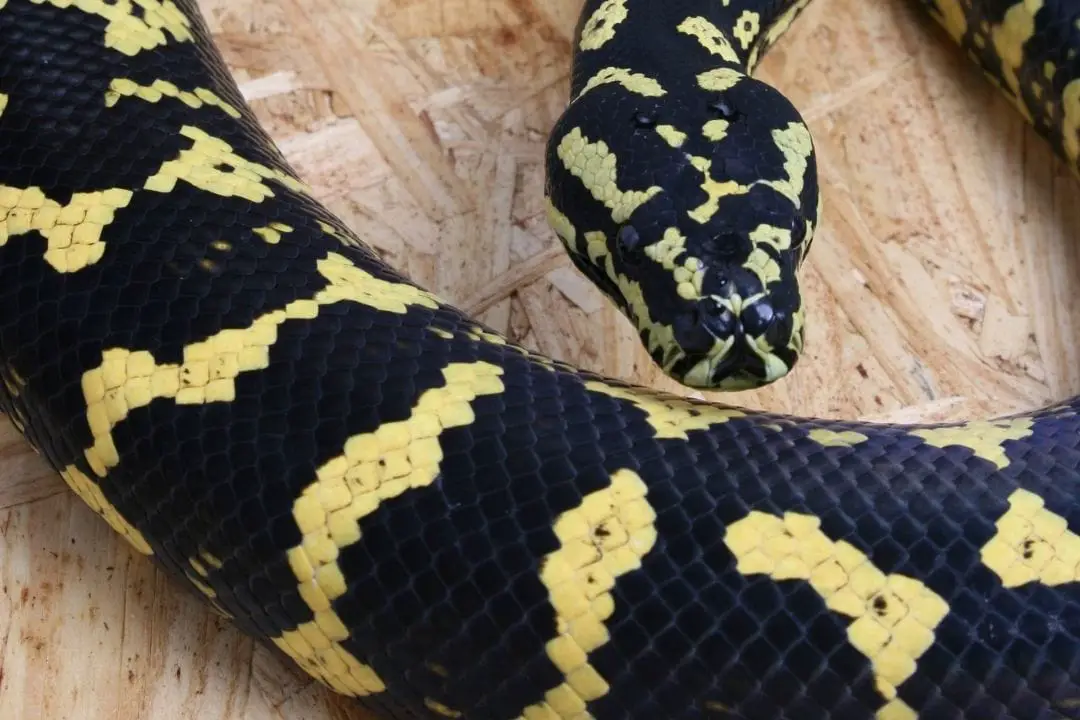
Will the female go off her food when a male has been put in with her. She used to eat well till then